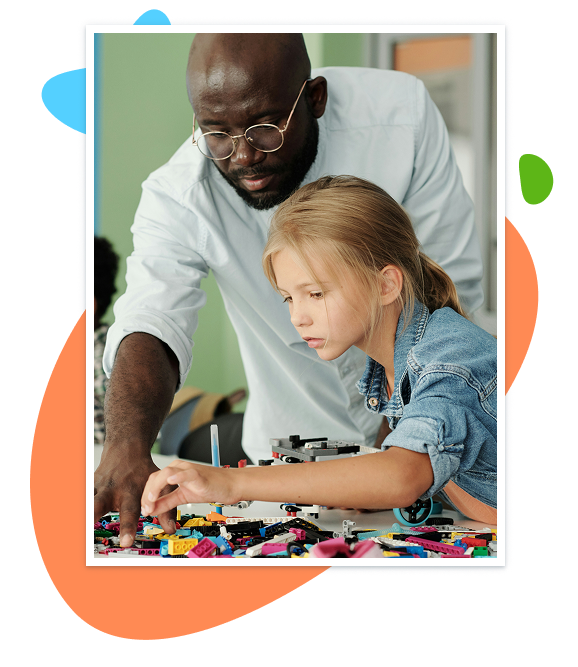What we do
We activate the power of family-school partnerships to improve student outcomes.
Every student deserves a bright future—and when families and schools work together, there’s no limit to what’s possible. But in most school systems, existing practices and structures weren’t built to support the daily, trust-based engagement that makes that future real.
Research shows that effective family engagement is one of the most powerful—and underused—levers for student success. When done well, it’s:
Twice as predictive of academic success
as family income
(Mapp & Henderson, 2002)
As impactful as adding $1,000 per student in annual support—without
increasing budgets
(Houtenville & Conway, 2008)

In short, family-school partnerships are an untapped superpower.
So why aren’t they the norm? What’s standing in the way—and what would it take to unlock their full potential?
The challenge
Today, 40 million students—four in five in the U.S.—are at risk of being left behind. And while families and educators are doing their best, they face persistent challenges in the work of supporting students:
managing attendance challenges, staff burnout,
resource constraints, regulatory uncertainty, and
addressing academic gaps
in how to engage families effectively
like language, time, and difficulty navigating the system
In this environment, family engagement isn’t a "nice to have." It’s a powerful, untapped solution.

Working harder isn’t the answer. Working differently is.
That’s where TalkingPoints comes in.
Our research-based approach
Our research-backed platform helps districts activate families as allies to support student success, expand teacher capacity, and improve system-wide outcomes.

Empower educators to build meaningful family partnerships with in-app guidance, time-saving tools, and best practices that support student success.
Create two-way communication that’s understandable, inclusive, and built for trust—through a universally designed, text-first platform in 150+ languages.
Equip families with the confidence, tools, and guidance they need to support their children’s learning—every day, in ways that work for them.
Our solution: A platform grounded
in Universal Family Engagement
We’re championing Universal Family Engagement—a pioneering practice that makes trust-based partnerships with families a purposeful, everyday part of teaching and learning.
We believe this approach is essential to unlocking student success. And we’ve built a platform that makes it possible, every day, in every classroom, by:
the fabric of school life

To be successful, the practice of Universal Family Engagement must be:
Purposeful
Focused on outcomes
and grounded in research
Inclusive
Designed so every family
can participate
Enduring
Built on trust through
consistent, two-way connection
Responsive
Adaptive to the
evolving needs of schools and families
When these four tenets are in place, districts unlock an incredible resource: the student’s first teacher, strongest advocate, and most knowledgeable expert. The result? Stronger classrooms, better outcomes for students, and more resilient school systems
The platform that
powers daily partnerships
Our award-winning platform gives districts the infrastructure to foster a culture of partnership—not just communication—for lasting impact.
It brings the three essential components of Universal Family Engagement together in one intuitive, research-based solution:
Embedded Best Practices
Educators learn by doing, building
confidence without extra training
Scaled Communication Tools
Two-way, translated, text-based
messaging by default
Data-Informed Guidance
Real-time insights to improve
engagement and target resources
where they’re needed most